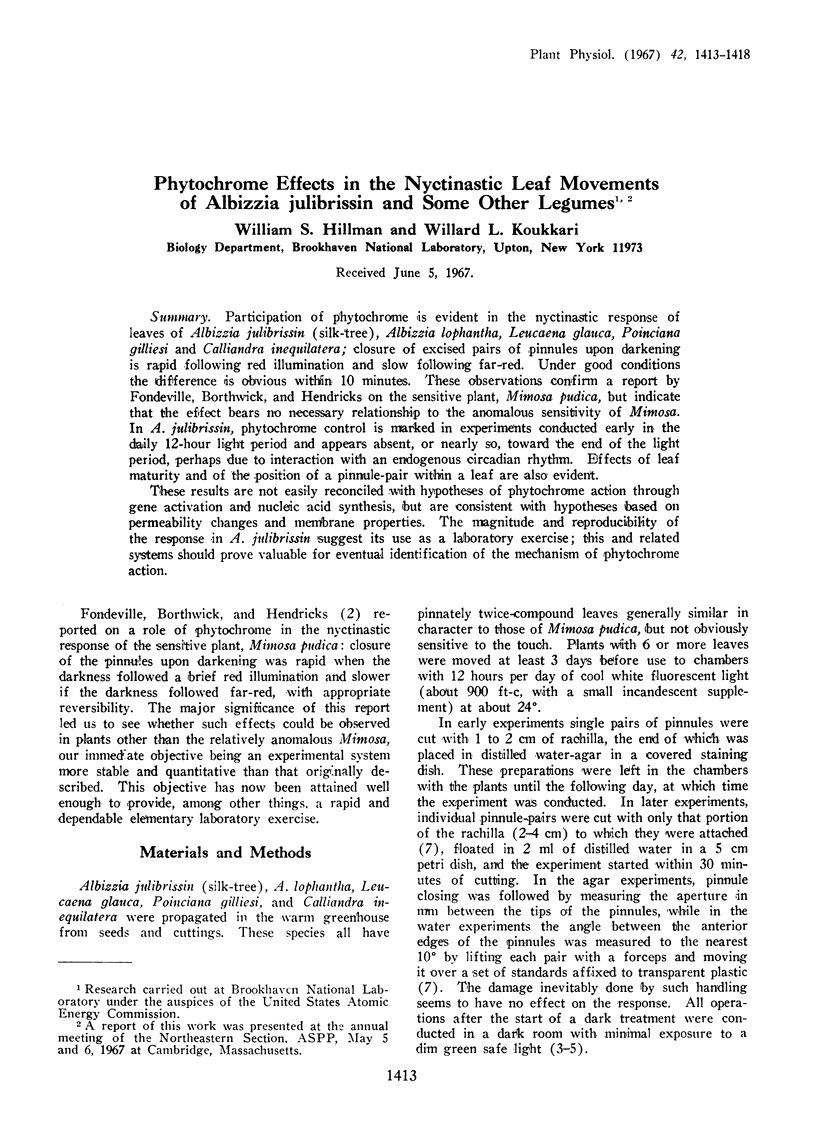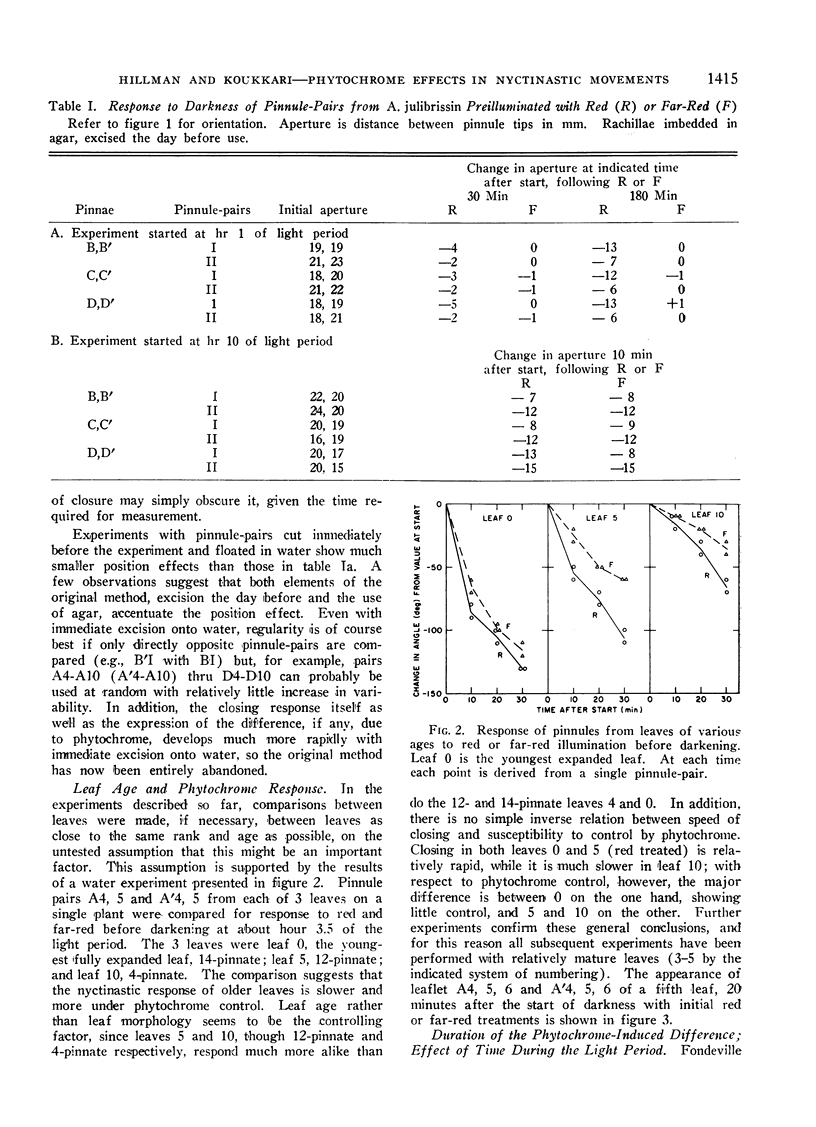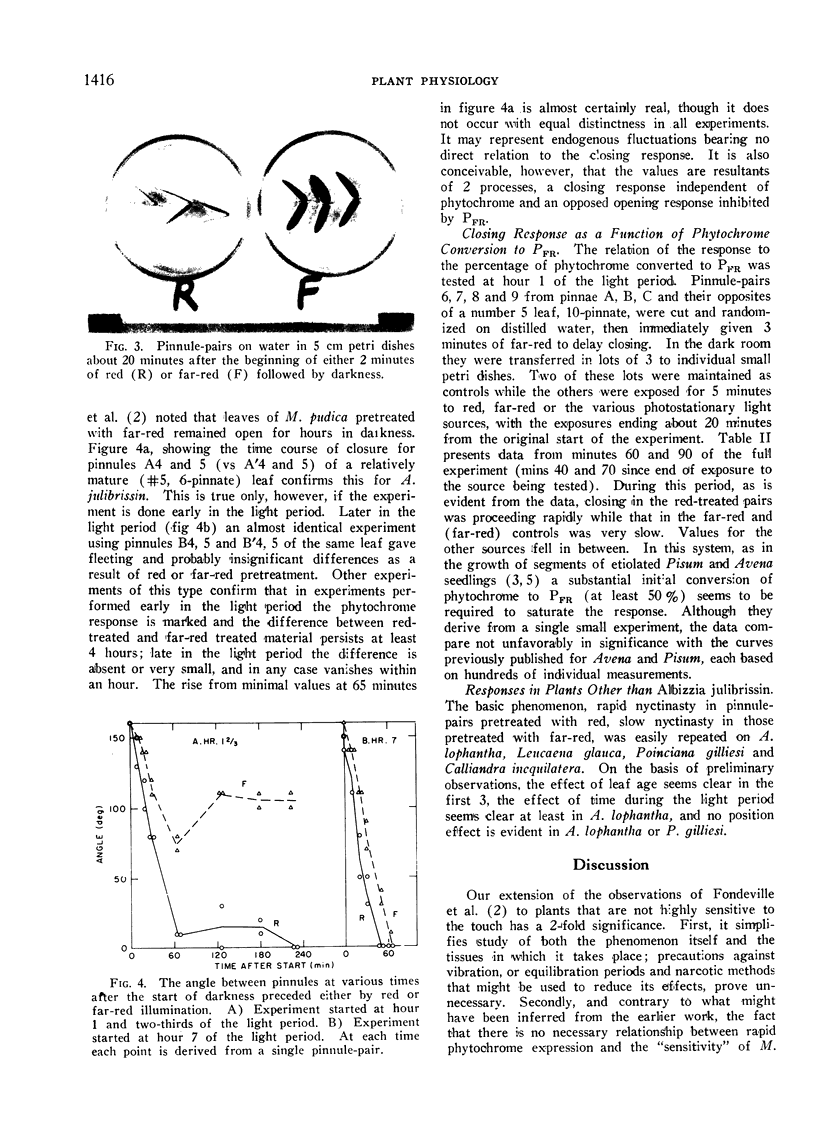Abstract
Participation of phytochrome is evident in the nyctinastic response of leaves of Albizzia julibrissin (silk-tree), Albizzia lophantha, Leucaena glauca, Poinciana gilliesi and Calliandra inequilatera; closure of excised pairs of pinnules upon darkening is rapid following red illumination and slow following far-red. Under good conditions the difference is obvious within 10 minutes. These observations confirm a report by Fondeville, Borthwick, and Hendricks on the sensitive plant, Mimosa pudica, but indicate that the effect bears no necessary relationship to the anomalous sensitivity of Mimosa. In A. julibrissin, phytochrome control is marked in experiments conducted early in the daily 12-hour light period and appears absent, or nearly so, toward the end of the light period, perhaps due to interaction with an endogenous circadian rhythm. Effects of leaf maturity and of the position of a pinnule-pair within a leaf are also evident.
These results are not easily reconciled with hypotheses of phytochrome action through gene activation and nucleic acid synthesis, but are consistent with hypotheses based on permeability changes and membrane properties. The magnitude and reproducibility of the response in A. julibrissin suggest its use as a laboratory exercise; this and related systems should prove valuable for eventual identification of the mechanism of phytochrome action.
Full text
PDF








